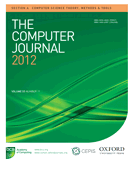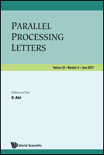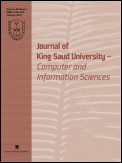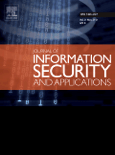
ADCAIJ-Advances in Distributed Computing and Artificial Intelligence Journal
Scope & Guideline
Catalyzing Collaboration in Computing and AI
Introduction
Aims and Scopes
- Distributed Computing Techniques:
Research on algorithms and frameworks for distributed systems, exploring their performance, scalability, and reliability in various applications. - Artificial Intelligence Applications:
Studies that demonstrate the application of AI methodologies in diverse fields such as healthcare, finance, and social media analysis. - Machine Learning and Deep Learning:
Focus on the development and evaluation of machine learning and deep learning algorithms, including novel architectures and optimization techniques. - Blockchain Integration:
Exploration of blockchain technology's role in securing and optimizing distributed systems, particularly in big data and healthcare. - Healthcare Informatics:
Investigations into the utilization of computing and AI technologies to improve healthcare outcomes, diagnostics, and decision-making processes. - Natural Language Processing and Sentiment Analysis:
Research on text processing, sentiment analysis, and the application of NLP techniques across various contexts, including social media. - Computer Vision Technologies:
Development of innovative computer vision methods and applications, particularly in areas such as object detection and medical imaging.
Trending and Emerging
- Healthcare AI Solutions:
An increasing number of studies focus on AI applications in healthcare, particularly in diagnostics and clinical decision support, reflecting the growing intersection of technology and medicine. - Integration of Blockchain with AI:
Research exploring the synergy between blockchain technology and AI is on the rise, particularly in enhancing data security and integrity in distributed systems. - Enhanced Natural Language Processing Techniques:
Emerging trends in advanced NLP methods, including sentiment analysis and text classification, show a growing interest in understanding human language through computational techniques. - Robotics and Automation:
The journal has seen a rise in publications related to robotics, particularly those integrating computer vision for enhanced automation and object handling. - Big Data Analytics:
Papers focusing on the extraction and analysis of big data using distributed computing frameworks are increasingly prevalent, reflecting the demand for effective data processing solutions. - Energy Efficiency in Computing:
There is a notable trend towards research on energy-efficient computing solutions, particularly in the context of distributed networks and sensor systems.
Declining or Waning
- Traditional Computing Paradigms:
Research focusing on conventional computing methods has diminished as the field shifts towards more advanced distributed and AI-driven approaches. - Basic Algorithm Comparisons:
Papers centered on simple comparisons of algorithms without novel contributions have decreased, indicating a preference for innovative applications and hybrid methodologies. - Low-Level Hardware Interfacing:
Publications dealing with low-level hardware interfacing are becoming less frequent, as the focus moves towards higher-level abstractions and software-driven solutions. - Generalized Surveys without Novel Insights:
The trend of publishing generalized survey papers that do not offer new insights or methodologies has waned, with a stronger emphasis on original research contributions.
Similar Journals

COMPUTER JOURNAL
Shaping the Future of Technology Through Scholarly ExcellenceCOMPUTER JOURNAL, published by Oxford University Press, is a distinguished platform for innovative research in the field of computer science, with a focus on general and miscellaneous aspects. The journal, established in 1967, continues to advance the boundaries of knowledge in computational technologies, algorithms, and interdisciplinary applications, contributing to its impressive ranking of Q2 in the 2023 Scopus category for Computer Science. With a robust ISSN of 0010-4620 and E-ISSN 1460-2067, it serves as a vital resource for researchers, professionals, and students seeking to stay at the forefront of technological advancements. Though not an open-access journal, it provides numerous access options via institutional subscriptions, making its high-impact articles widely available, especially as the journal bridges over five decades of research from 1967 to 2024. The COMPUTER JOURNAL is committed to fostering scholarly communication and ensuring that critical insights in the ever-evolving realm of computer science reach a diverse audience, thus solidifying its role as an essential resource in academia.

Parallel Processing Letters
Pioneering Insights in Theoretical Computer Science.Parallel Processing Letters is a notable academic journal published by World Scientific Publishing Co Pte Ltd, focusing on the dynamic fields of Computer Science, particularly in Hardware and Architecture, Software, and Theoretical Computer Science. Established in 1994, this journal provides a platform for the dissemination of cutting-edge research and developments in parallel processing and computational technologies. Despite its current Q4 ranking in multiple categories, Parallel Processing Letters plays an important role in fostering scholarly discussion and innovation within the computing community. With the ISSN 0129-6264 and E-ISSN 1793-642X, the journal is dedicated to maintaining rigorous academic standards while encouraging collaborative research conducive to the advancement of parallel processing systems. It serves as a valuable resource for researchers, professionals, and students seeking to deepen their understanding and gain insights into this rapidly evolving domain.

Scalable Computing-Practice and Experience
Bridging Theory and Practice in ComputingScalable Computing - Practice and Experience, published by UNIV VEST TIMISOARA, stands as a significant platform for research and discourse in the realm of computer science, particularly focusing on practical applications and scalability in computing systems. Established in 2005, it aims to bridge the gap between theoretical advancements and real-world implementations, catering to a diverse readership that includes researchers, professionals, and students who are keen on exploring innovative computing practices. With an H-index reflective of its contribution and a Category Quartile of Q3 in Computer Science (miscellaneous), the journal offers a rich repository of knowledge, albeit currently not open access, from its base in Timisoara, Romania. The journal is included in Scopus rankings, underscoring its relevancy with a current rank of #144 out of 232 in the General Computer Science category, placing it in the 38th percentile. It invites contributions that expand the horizons of scalable computing methodologies and experiences, making it a vital resource for those engaged in this rapidly evolving field.

Cluster Computing-The Journal of Networks Software Tools and Applications
Exploring the Frontiers of Cluster ComputingCluster Computing - The Journal of Networks Software Tools and Applications, published by Springer, is a premier academic journal catering to the vibrant fields of computer networks and software technologies. With an impressive impact factor and recognized as a Q1 journal in both Computer Networks and Communications and Software categories for 2023, it ranks within the top echelons of its field, boasting a Scopus rank of #50 out of 395 and #59 out of 407 respectively, highlighting its influence and reach. The journal, which has been in continuous publication since 2005, serves as a vital platform for groundbreaking research, offering insightful articles and tools that drive innovation in network computing. Researchers, professionals, and students are invited to contribute to and benefit from the dynamic discourse presented in this journal, which is pivotal for advancing knowledge and enhancing practical applications in a rapidly evolving technological landscape.

Journal of King Saud University-Computer and Information Sciences
Elevating Academic Discourse in ComputingJournal of King Saud University-Computer and Information Sciences, published by ELSEVIER, is a prestigious open-access journal focusing on the rapidly evolving fields of computer science and information technology. Since its inception in 1996, this journal has provided a platform for high-quality research and innovative ideas, promoting the dissemination of knowledge to a global audience. With a remarkable impact factor and ranked Q1 in the Computer Science (miscellaneous) category as of 2023, it stands among the top 11% of journals in its field, reflecting its commitment to excellence and relevance. The journal proudly carries the ISSN 1319-1578 and E-ISSN 2213-1248, and it is based in Saudi Arabia while being part of a global academic network. With a Scopus rank of #26 out of 232 in general computer science, the Journal of King Saud University-Computer and Information Sciences is an essential resource for researchers, professionals, and students seeking to stay at the forefront of technological advancement. As it continues to thrive through 2024, it invites contributions that will shape the future of computing and information sciences.

Journal of Information Security and Applications
Advancing the Frontiers of Information SecurityJournal of Information Security and Applications, published by ELSEVIER, is a premier outlet for cutting-edge research in the field of information security and applications. With a dedicated ISSN of 2214-2126 and an E-ISSN of 2214-2134, this journal ranks impressively in the top quartile (Q1) across multiple categories as of 2023, including Computer Networks and Communications, Safety, Risk, Reliability and Quality, and Software. The journal’s notable Scopus rankings further reflect its impact, holding positions within the top 15% in several engineering and computer science areas. Spanning a converged period from 2013 to 2024, the journal aims to disseminate high-quality research findings, facilitating a vibrant platform for scholars, practitioners, and students to engage with contemporary challenges in information security. Although not an open-access journal, the knowledge shared within its pages is indispensable for those dedicated to advancing the technological and theoretical underpinnings of security measures in various applications.

Service Oriented Computing and Applications
Navigating the Landscape of Computing ExcellenceService Oriented Computing and Applications is an esteemed journal published by SPRINGERNATURE, focusing on the rapidly evolving domains of service-oriented computing and its myriad applications. With an ISSN of 1863-2386 and an E-ISSN of 1863-2394, this journal has an impressive track record since its inception in 2007, converging with significant contributions from researchers and professionals through 2024. This journal stands out in the academic landscape, evidenced by its categorization in Q2 across multiple fields, including Hardware and Architecture, Information Systems, Management Information Systems, and Software, as per the latest 2023 metrics. Although it does not currently offer Open Access options, its relevance in Computer Science, Business Management, and integrated technology makes it a valuable resource for scholars and practitioners alike, aiming to explore the intersection of computing technologies and their application in real-world scenarios. The journal's rankings in Scopus provide further testament to its impact and importance, making it a key publication for anyone looking to stay at the forefront of advancements in service-oriented computing.

Journal of Grid Computing
Advancing the Frontiers of Distributed ComputingThe Journal of Grid Computing, published by Springer, stands as a pivotal resource in the dynamic field of computer science, particularly within the realms of Computer Networks and Communications, Hardware and Architecture, Information Systems, and Software. With an impressive Q1 ranking across these categories in 2023, the journal exemplifies excellence and rigor, catering to a diverse readership from researchers to industry professionals. Established in 2003, this esteemed journal is anchored in the Netherlands and releases cutting-edge research that reflects trends and advancements in grid computing technologies. Researchers can gain insights through its vast contributions, while institutions benefit from its prestigious standing within the SCOPUS framework, boasting high percentile ranks in multiple computer science categories. Though not open access, the journal provides unparalleled access options for institutional subscribers, solidifying its importance as a gateway to innovative discoveries in high-performance distributed computing.

Jordanian Journal of Computers and Information Technology
Catalyzing Academic Excellence in Computing ResearchJordanian Journal of Computers and Information Technology, published by Princess Sumaya University and SRSF, stands as a significant platform for scholarly research in the realm of computer science, particularly in topics related to emerging technologies and information systems. With its Open Access model initiated in 2015, the journal facilitates global access to high-quality research findings, embodying the principles of knowledge sharing and academic collaboration. The journal's ranking in the Q3 category of Computer Science (miscellaneous) and its placement in the 54th percentile of Scopus' General Computer Science rankings underscore its growing reputation among researchers and professionals alike. Situated in Amman, Jordan, the journal actively contributes to the regional and international discourse on computing methodologies, applications, and innovations, making it an indispensable resource for scholars seeking to advance their understanding and engage with contemporary issues in technology.

Computer Science Journal of Moldova
Transforming Ideas into Solutions for Tomorrow's ChallengesComputer Science Journal of Moldova, published by the Institute of Mathematics and Computer Science Academy, serves as a pivotal platform for disseminating research in the field of computer science since its inception in 1993. With a focus on a diverse range of subjects, including Artificial Intelligence, Computational Mathematics, and Software Engineering, this open access journal aims to foster innovation and collaboration among researchers, students, and industry professionals. Despite its current positioning in the lower quartiles as per the latest Scopus rankings, the journal remains committed to enhancing the visibility of regional research and addressing contemporary challenges through scholarly contributions. The journal’s open access model ensures that knowledge is freely available, promoting broader readership and impact within the international academic community. As it moves through the converged years from 2019 to 2024, the Computer Science Journal of Moldova continues to aspire toward empowering the next generation of computer scientists while enriching the global dialogue in this rapidly evolving field.